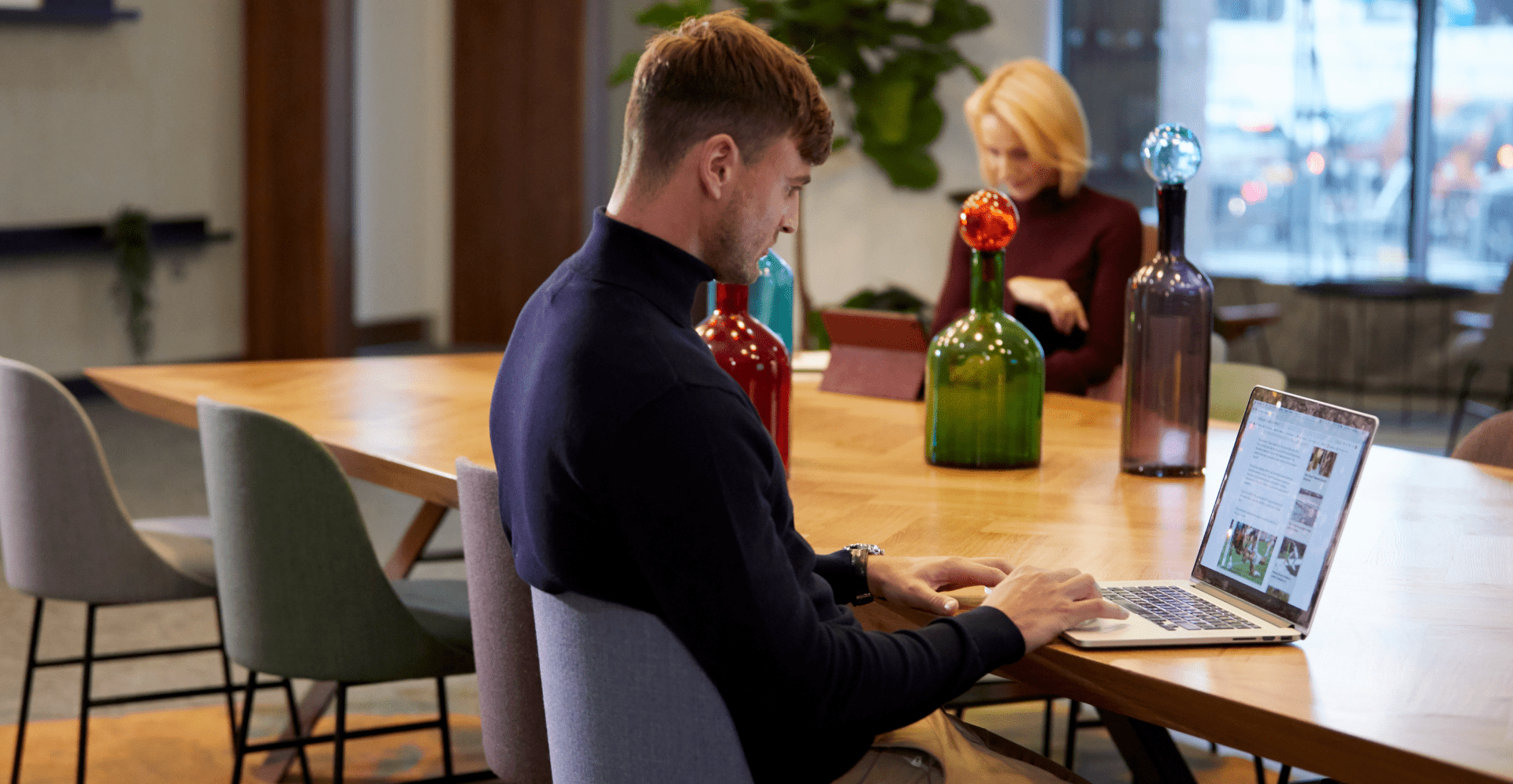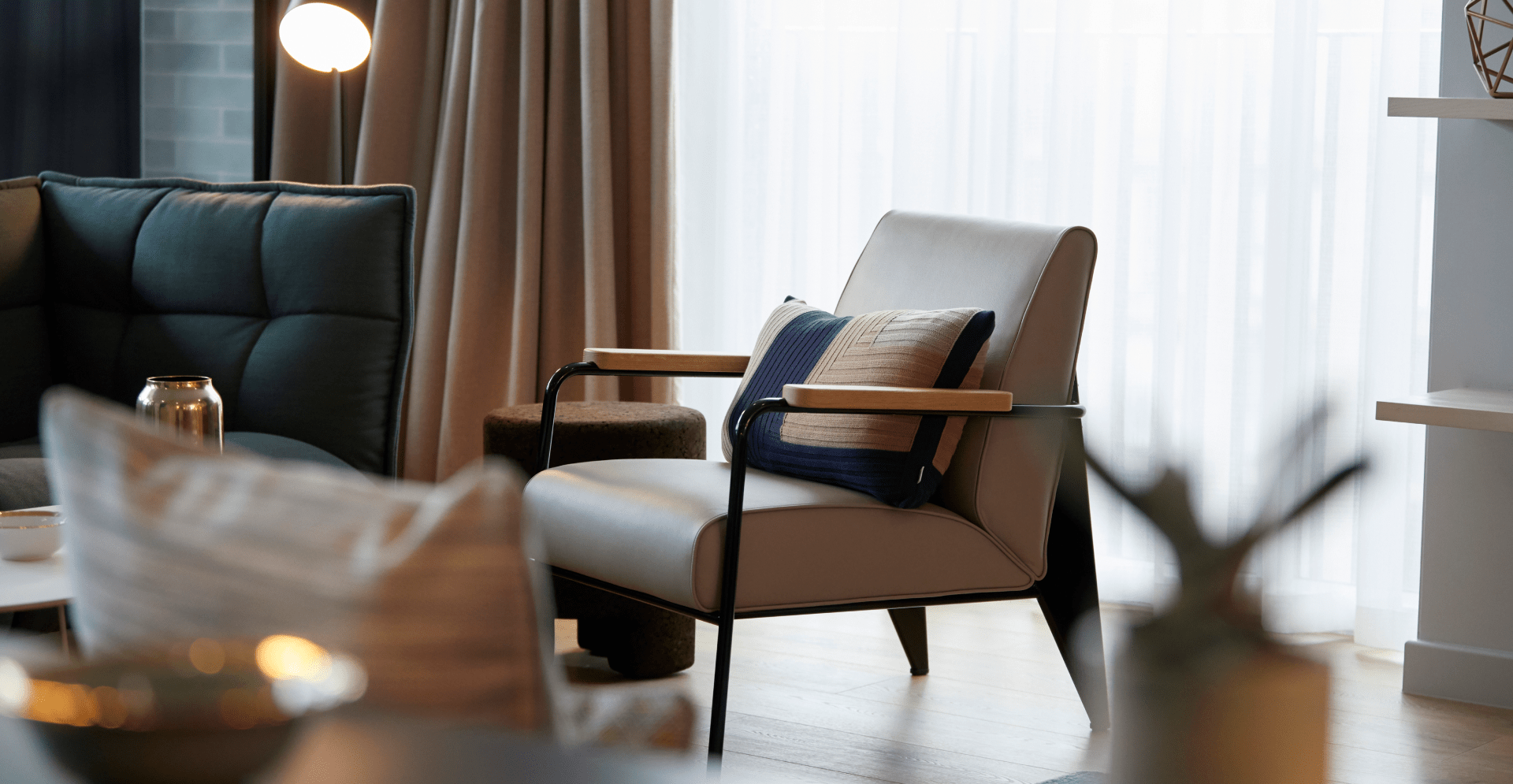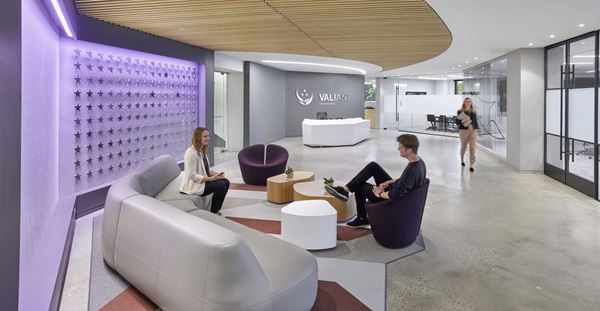The quest to forge emotional connections through architectural design has long captivated the minds of architects and designers. Today, in our post-COVID-19 world characterized by complex socio-economic shifts, this endeavor holds more significance than ever, particularly within workplace interiors.
Let us reimagine the workplace as a vibrant and magnetic space filled with meaning where people gather, connect, learn, collaborate, and create. When comprehending the emotional resonance of designed offices and their profound impact on our creativity, focus, and well-being, we turn to the realm of neuroscience.

Aesthetic Experiences
Neuroaesthetics research shows how our brains react to art, including architecture, and the response to beauty. Aesthetically pleasing environments trigger the release of dopamine, the neurotransmitter responsible for pleasure and reward, simultaneously reducing stress—a phenomenon that extends to beauty found in well-designed spaces. Moreover, aesthetically enriched offices evoke awe and pride in one’s workplace.
Aesthetic experiences engage our senses, emotions, and pre-existing knowledge, encompassing the sensory-motor, emotion-valuation, and meaning-knowledge neural systems, all orchestrated by the prefrontal cortex (for thinking) and limbic systems (for emotions).
In other words…we think and feel beauty.

The Aesthetic Triad
In 2013, Chatterjee and Shimamura introduced the concept of The Aesthetic Triad, which has more recently been applied to architectural interiors, focusing on three psychological components that are integral to the perception of aesthetics: coherence, fascination, and hominess. Emotion is central for all three, ranging from the pleasant to the unpleasant or from the attractive to the unattractive.
Coherence, the first factor, pertains to the ease of organizing and comprehending a space or scene. It encompasses the emotional response to the clarity of layout, geometry, and spatial organization, profoundly impacting how people interact and communicate. Open spaces with lofty ceilings foster big-picture thinking, spontaneous interactions, and idea-sharing, especially when prospect and refuge are present. Conversely, secluded offices with lower ceilings and views of adjacent open areas support focus and concentration, ideal for detail-oriented tasks.

Providing options for different types of spaces can mold an organization’s culture and boost productivity by instilling a sense of autonomy in employees, which, in turn, kindles positive emotions.
Crafting a relaxed, home-like ambiance through ergonomic furniture, precisely calibrated acoustics, and thermal comfort plays a role in eliciting the perception of hominess, which relates to personal ease and comfort within architectural interiors. Striking a balance between visual complexity and simplicity also draws forth this positive emotional response.
Our emotional design toolkit encompasses two more elements: Nature and Color Psychology. Exposure to natural elements like plants, natural light, and views of greenery reduces stress, enhances creativity, boosts cognitive functions, and improves overall well-being. The strategic use of color can profoundly affect mood and emotions. Warm colors like orange and yellow infuse energy, optimism, and enthusiasm, while cooler tones like blue and green foster creativity, calmness, and focus.

As we continue exploring the nexus of neuroscience, architecture, design, and aesthetic perception, we can harness these insights to create spaces that serve their functional purpose and nurture the emotional, aesthetic, social, and psychological needs of its occupants.
A longer version of this blog was published by Work Design Magazine on 5 October 2023.




